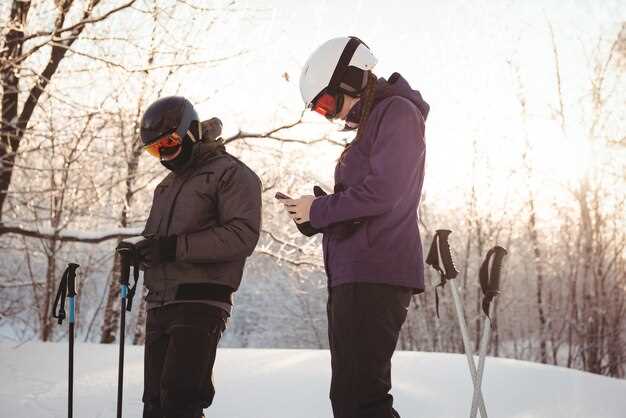
When the temperature drops and the chill of winter settles in, riding a motorcycle can become a daunting task. Cold weather not only affects comfort but can also impact safety and performance. Fortunately, technology has advanced to provide riders with a range of heated gear that can significantly enhance their experience during those frosty rides.
Heated gear is designed to combat the biting cold, ensuring that riders can maintain warmth without sacrificing mobility or control. Utilizing battery-powered heating elements, these products generate warmth directly against the body, providing targeted heat to key areas vulnerable to cold weather such as the core, hands, and feet. In this article, we will delve into the top heated gear options available for cold weather riding, ensuring you stay warm and focused on the road ahead.
Understanding the various types of heated gear is essential for any rider looking to brave the elements. From heated vests and gloves to insoles and jackets, the right gear can make a significant difference in your riding experience. We will explore the features, benefits, and specifications of each type, providing you with the knowledge to make informed decisions for your chilly adventures.
Choosing the Right Heated Jacket for Maximum Comfort
When selecting a heated jacket for cold weather riding, several factors come into play to ensure maximum comfort. First, consider the heating elements. Look for jackets with strategically placed heating zones, typically located in the core areas such as the chest and back. This setup helps to distribute warmth evenly and effectively, keeping the body warm without overheating.
Next, pay attention to the insulation material. A quality heated jacket should combine heating technology with effective thermal insulation. Look for options that include materials like down or synthetic fibers, which provide excellent heat retention while remaining lightweight.
Power source versatility is another critical aspect. Opt for jackets that can be powered by rechargeable batteries or, in some cases, even compatible with your bike’s electrical system. This flexibility can extend your riding time while ensuring that your jacket remains functional during longer trips.
Fit and comfort are essential as well. Choose a jacket that allows for a full range of motion without being too bulky. A snug fit can help trap body heat effectively, but make sure it isn’t restrictive, especially if you plan to wear layers underneath. Additionally, features like adjustable cuffs and hoods can enhance overall comfort, providing a customized fit.
Finally, consider the jacket’s weather resistance. A quality heated jacket should be both water-resistant and windproof, as these elements can significantly impact your riding experience. Look for jackets that have sealed seams and durable materials designed to withstand harsh weather conditions.
Understanding Battery Life and Heating Settings in Heated Gloves

When investing in heated gloves for cold weather riding, understanding the battery life and heating settings is crucial for optimizing your experience. Heated gloves typically operate on rechargeable lithium-ion batteries, which offer varying performance based on the glove model and the intensity of heat settings used.
Battery life is an essential factor to consider, as it directly impacts how long you can enjoy warmth during your ride. Most heated gloves come with multiple heat settings, usually categorized as low, medium, and high. On the low setting, gloves can last anywhere from 6 to 8 hours, making them suitable for longer rides in mildly cold conditions. Medium settings often provide around 3 to 6 hours of heat, while high settings can drain the battery within 2 to 4 hours, making them ideal for extreme cold but less practical for extended use.
It’s essential to assess the intended duration of your rides when choosing heated gloves. Riders who plan on longer outings should prioritize gloves with longer battery life or consider carrying spare batteries. Additionally, some brands offer gloves with smart technology that allows users to monitor battery levels via mobile apps, providing real-time feedback on remaining power and estimated usage time based on the current heating setting.
Heating settings are not only about comfort; they also play a role in energy conservation. Utilizing the low setting during less extreme cold can preserve battery life, ensuring that you have sufficient warmth for the entire ride. Conversely, using high heat in severe conditions can provide immediate relief but requires careful management to avoid depleting the battery too quickly.
In summary, understanding battery life and efficiently managing heating settings are vital for maximizing the benefits of heated gloves. Consider your riding habits, the typical duration in cold weather, and choose gloves that fit your lifestyle while maintaining optimal warmth throughout your adventures.
Selecting Heated Base Layers to Enhance Riding Experience

When it comes to riding in cold weather, having the right base layers can significantly improve comfort and performance. Heated base layers are designed to provide consistent warmth, ensuring that riders stay cozy even in frigid conditions. Selecting the right heated base layers involves considering multiple factors such as material, fit, battery life, and heating zones.
The material of heated base layers is crucial for both insulation and moisture management. Look for fabrics that are lightweight yet provide excellent thermal protection. Common materials include polyester blends that wick moisture away from the skin while retaining heat. Additionally, base layers made of merino wool can offer natural insulation properties and breathability, making them an appealing option for cold-weather riding.
Fit is another important aspect. Heated base layers should have a snug yet comfortable fit to maximize heat retention while preventing bulkiness under riding gear. A streamlined design will not only enhance mobility but also ensure that heat is efficiently distributed across the body. It’s advisable to try on various brands and styles to find the best fit for your specific riding posture.
Battery life is a significant consideration when choosing heated base layers. Riders should look for garments with long-lasting batteries that can provide adequate warmth throughout their rides. Many products offer multiple heat settings, allowing users to adjust the intensity based on their environment and personal preference. Always check the estimated runtime and charging time to ensure that the layers meet your riding schedule.
Heating zones are also worth examining. Different products feature varying configurations of heating elements, usually placed across key areas such as the back, chest, and core. A base layer with strategically positioned heating zones will effectively target critical areas to keep your body warm. Some layers may even include additional features, such as heating pads for the lower back and neck, enhancing overall comfort during long rides.
In conclusion, selecting the right heated base layers is essential for enjoying cold-weather riding. Focus on high-quality materials, ensure a proper fit, consider battery life, and evaluate heating zones to elevate your riding experience. Investing in well-designed heated base layers will keep you warm and allow you to fully enjoy your time on the road, even in the harshest conditions.